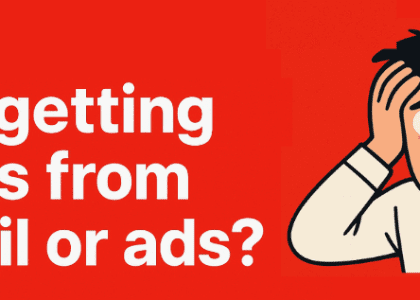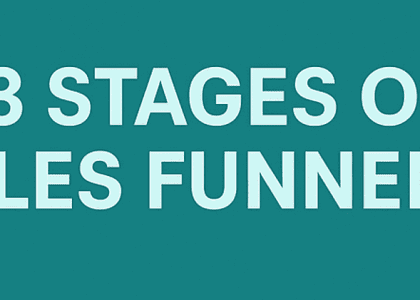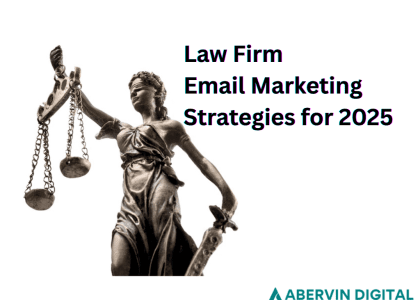In 2025, Tracking the Right Email Marketing Metrics Is Everything
Every email you send either builds your sender reputation or chips away at it. And the only way to know which one it’s doing is to track the right email marketing metrics.
Here’s the hard truth: most marketers have a measurement problem. They’re either tracking the wrong data, checking too late, or not tracking at all. And in 2025, that’s exactly how emails start landing in spam, your list quietly dies, and sales mysteriously dip.
Back in the day, email marketing felt intuitive. You’d write a clever subject line, hit “send,” cross your fingers, and hope the sales came rolling in. If the open rate seemed decent, great. If not? You shrugged it off and tried again next week.
But that version of email marketing is long gone.
Inbox algorithms are smarter, spam filters stricter, and AI now helps decide whether your campaign deserves to be seen. Add Apple’s Mail Privacy Protection and Gmail’s machine-learning filters, and suddenly, you’re flying blind unless you know exactly what to track.
Because in a world where email marketing metrics benchmarks are shifting constantly, trusting your gut is a dangerous game..
Now, the thing is instinct still has its place but data is how you scale, adapt, and win in a crowded, competitive inbox environment.
If you don’t know your average bounce rate, engagement decay, or what subject lines actually convert into business, you’re not optimizing, you’re guessing. And guessing in 2025 is a fast way to lose deliverability, revenue, and your audience’s trust.
That’s why we wrote this guide.
We’re breaking down the 8 key metrics for email marketing that actually move the needle. We’ll discuss everything from deliverability to conversions. Because once you start measuring what matters, everything else gets easier.. Understanding these metrics is how you 10X your ROI.
The 8 Key Metrics for Email Marketing That Matter in 2025
So as we mentioned earlier the rules have changed, yes. But that doesn’t mean email is dead. In fact, it’s more powerful than ever if you know how to play by the new rules. And the first step to doing that is understanding what metrics actually matter now. Because when you know what to track, you can actually start improving. Let’s get into it.
1. Bounce Rate: An Email Marketing Metric That Impacts Deliverability

Your bounce rate is a metric, but it’s also a direct reflection of your list quality, data hygiene, and sender reputation. In 2025, inbox providers like Gmail and Outlook are placing more weight on bounce patterns when evaluating whether your next email deserves the inbox or the spam folder.
Now, there are two types of bounces: hard bounces and soft bounces.
Hard bounces mean the email address is invalid, fake, or permanently unreachable. Soft bounces are temporary issues like a full inbox or a down server. But it’s 2025 and today, too many soft bounces make ISPs and ESPs look at you as a sender who may be losing control of their hygiene and you could get penalized.
A healthy bounce rate should be under 2%. But for the sharpest performers, the email marketing metrics benchmark is now closer to 0.7%, especially in fast-moving B2B sectors where email churn is high If yours clocks in at above that, it’s time to act. Audit your list source, clean up inactive or unengaged contacts, and double-check for any recent imports from unverified sources.
Here’s what we recommend at Abervin Digital:
- Use double opt-in to verify new contacts
- Suppress emails after 1 hard bounce or 3 soft bounces
- Clean your list regularly using tools like NeverBounce or your ESP’s built-in filters
Too many marketers treat bounce rate as an isolated stat. But the truth? It compounds. And the damage to your domain can quietly tank future campaigns, no matter how good your content is.
So before chasing opens and clicks, start here to learn how you can fix your email bounce rate.
Bounce rate is the canary in the coal mine of your entire email program.
2. Open Rate: The Email Marketing Metric Everyone Watches (But Few Understand)
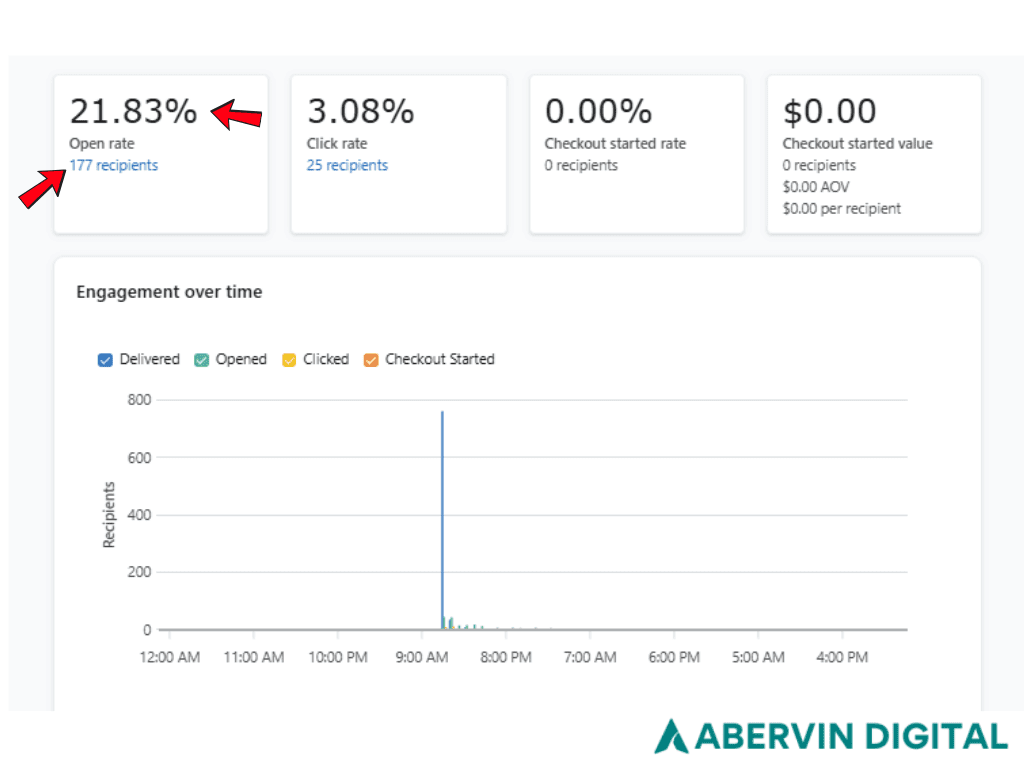
In 2025, one of the most misunderstood email marketing metrics is still the open rate. It used to be the gold standard. High open rate? You’re winning. Low? Something’s broken. But now, with Apple’s Mail Privacy Protection (AMPP) auto-opening emails in the background, your campaign might show a 42% open rate when a chunk of those are phantom opens from iOS background scans.
So… is open rate useless? Not quite.
Open rate is still a valuable directional indicator. It’s not the truth but it’s a signal. Like a check engine light. It won’t tell you exactly what’s wrong, but it alerts you when something’s off. If your open rate drops from a steady 30% to 18%, that’s not Apple… that’s a problem worth solving. Maybe your subject line’s stale, your sender name lacks trust, or you’re hitting the spam folder.
To read this metric smarter in 2025, segment by domain. Many ESPs now show which opens come from Apple Mail vs. Gmail. If Gmail’s steady and Outlook’s tanking, that’s a deliverability red flag. You can also use tools like Mail-Tester or GlockApps to check where your emails are actually landing.
Timing is also crucial. Knowing the best time to send emails can make or break open rates. If most of your audience is in the US, test morning vs. evening sends and adjust by engagement trends.
The trick in 2025 with Open Rates is “Clicks” are the new opens. If you’re segmenting based on engagement – pruning lists, warming IPs, building retargeting audiences – do it based on clickers, not just openers. Clicks mean someone read your content and made a choice. In an era where open rates can be misleading, clicks remain one of the key metrics for email marketing success.
3. Click-Through Rate (CTR)
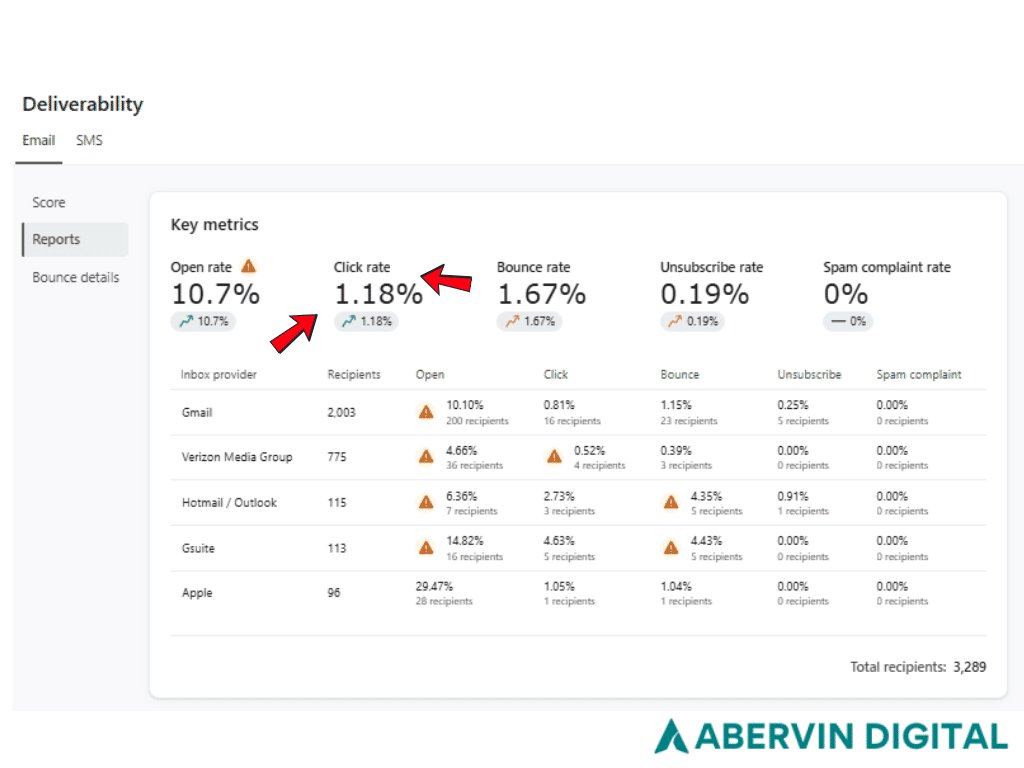
Click-through rate is the real MVP of modern email marketing metrics. While open rates hint at interest, CTR confirms it. It tells you if your content actually moved someone to do something like click, explore, buy, or act.
Average CTRs hover around 2-5%, but honestly, benchmarks vary wildly. What matters most is your trend. Are your clicks increasing campaign to campaign? Or are they slowly fading?
When CTR slips, look at three things:
- Content: Is it clear and easy to read?
- CTA placement: Is your call-to-action buried or confusing?
- Design: Too many links? Too many decisions?
In 2025, overloaded inboxes mean your message has to be sharp and singular. One goal per email. One clear action. Not three offers, two footers, and a “P.S.” longer than the email.
Using a platform with essential email marketing features can make a big difference in your CTR. These platforms allow you insert bold, mobile-friendly buttons that say what they do (“Get My Free Guide” > “Click Here”). They also have smarter segmentation to help you write your CTAs like a friend giving you a shortcut, not a marketer pushing a pitch.
Timing also matters. If most clicks happen in the first 5 minutes, congrats, your subject line and preheader nailed it. If they happen hours later, maybe your subscribers are saving emails for a calmer moment. Use that behavior to your advantage. Segment based on click velocity. Fast-clickers are hot leads. Late-clickers may need nurturing.
In short: CTR is the email marketing metrics benchmark that decides inbox success in 2025.
4. Click-to-Open Rate (CTOR)
Click-to-Open Rate is the metric that shows how many of your actual openers clicked. It calculates how many of your openers found your content compelling enough to act. It follows a basic math: (Clicks ÷ Opens) × 100
Say your campaign had a 28% open rate and a 2.8% CTR. This means your CTOR is 10%. Not bad. But if that email was hyped as a “limited-time deal,” a 10% CTOR might actually mean your openers are disconnecting from the offer.
That’s why CTOR is one of the key metrics for email marketing in 2025. It uncovers mismatches like:
- Design choices that buried your value
- A subject line that overpromised
- A CTA that underdelivered
Your subject lines are a huge factor. Try adding personality or even subtle emoji use when relevant. If you need ideas, check out our guide on using emojis effectively in email subject lines.
In 2025, smart email marketers know that fewer clicks today mean fewer opens tomorrow so they study the CTOR metric to:
- Diagnose content mismatch (Did the email promise something the body didn’t deliver?).
- Test different hero images or text headlines.
- Refine CTA placement and copy.
So what’s a “good” CTOR? Context matters.
For educational newsletters, 8–12% might be solid. For product announcements or ecommerce flash sales, you should aim for 15%+. Anything north of 20% and you’re breathing rarified air – and that usually only happens with laser-sharp targeting, great storytelling, and CTAs that feel inevitable.
Bottom line is this: your CTOR is one of the most honest indicators of content health among all email marketing metrics.
5. Unsubscribe Rate
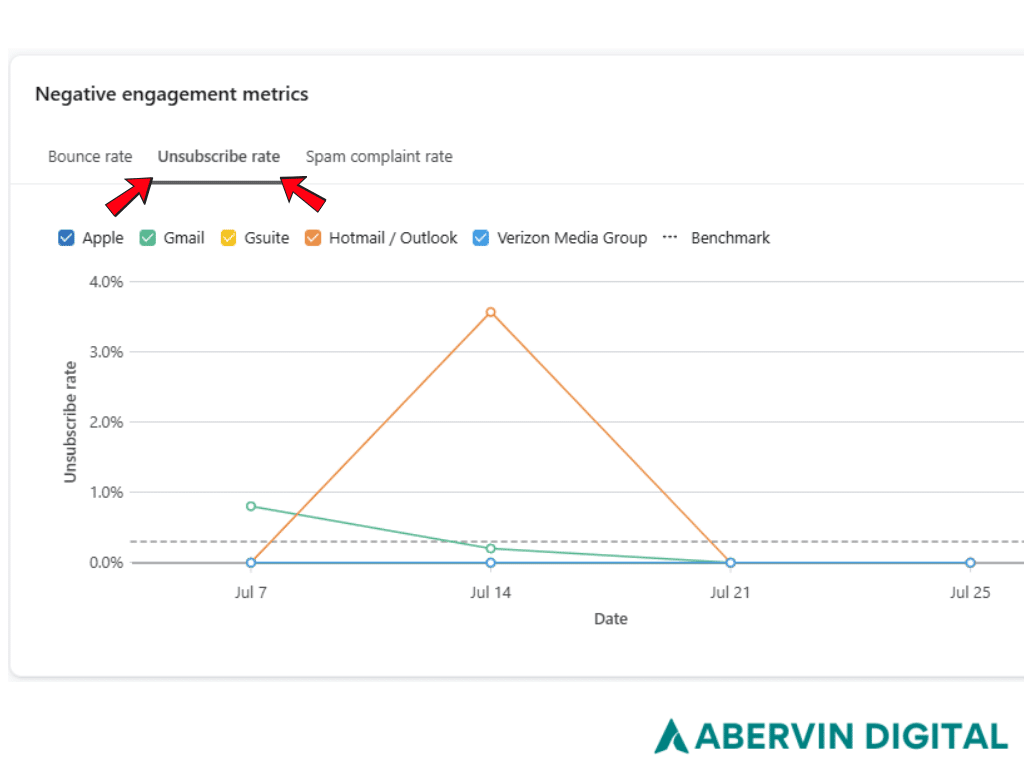
In 2025, inbox providers are not just watching who unsubscribed, they’re watching how many did, and how often. So a sudden spike in unsubscribes doesn’t just trim your list, it dents your sender reputation in subtle, compounding ways.
A healthy unsubscribe rate today hovers under 0.2% for engaged lists, with anything over 0.5% raising deliverability eyebrows. But it’s not just the number – it’s the pattern. Gmail, Outlook, and Apple Mail don’t just tally unsubscribes. They factor in context: was this a promotional blast or a nurture email? Was it sent to new leads or long-time subscribers? Did the person open and scroll – or click out within seconds? Inboxes providers are not waiting for angry spam complaints. If too many people silently opt-out, it is enough to start throttling your inbox placement.
Now the tricky thing is that unsubscribes can look like a hygiene win. You think “They’re cleaning themselves out – that’s good, right?” Sometimes, yes. Especially if you’re sending at scale. But when those unsubscribes come from the wrong segment, for example, new subscribers, or reactivated leads – it means your first impression sucked. Or worse, that your content was confusing.
The good news is smart ESPs in 2025 now offer unsubscribe heatmaps – visual breakdowns of who left, when, and what they saw before leaving. Use that data. If unsubscribes spike on a promo-heavy week, segment more tightly. If they rise after a lead magnet follow-up, rethink your onboarding. Maybe your welcome emails are overhyped and underdelivering. Maybe your list source is cold and low-intent.
Either way, your list is talking to you via your unsubscribe rate and it is your job is to listen before the platforms do.
6. Spam Complaint Rate
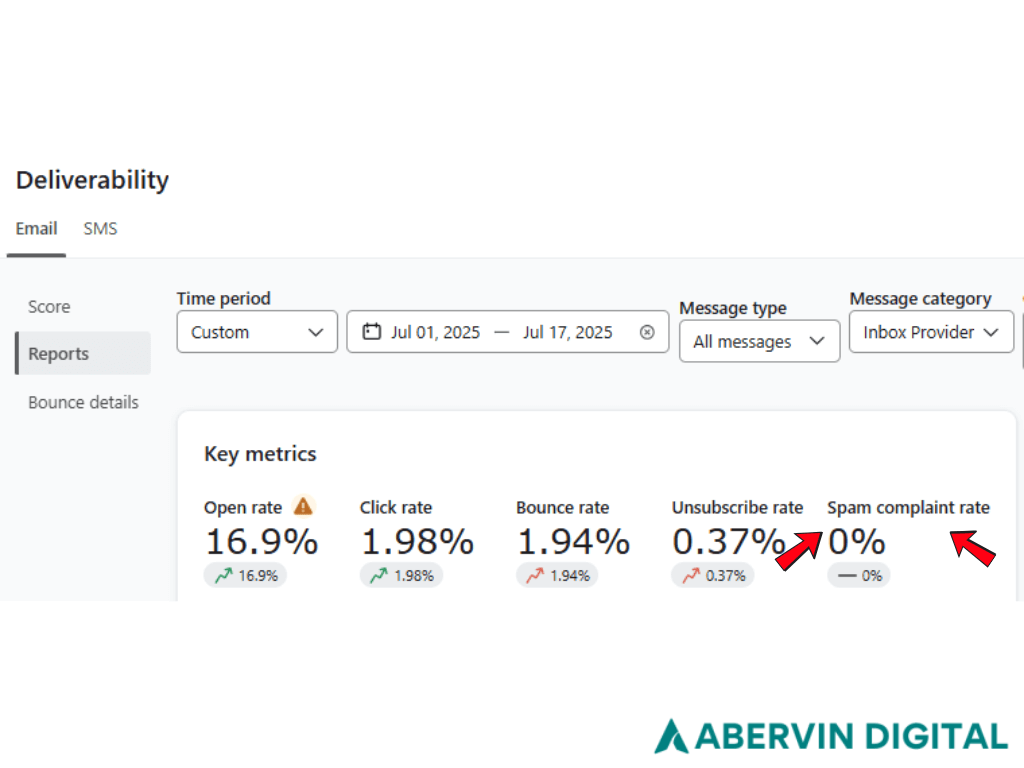
A spam complaint is a silent vote against your credibility, quietly reported to mailbox providers like Gmail, Outlook, and Yahoo. And these guys absolutely keep score.
Back in the day, a 0.2% or 0.3% spam complaint rate was survivable. In 2025, even 0.1% (that’s 1 complaint per 1,000 emails) can trip filters, trigger throttling, and quietly tank your deliverability. One bad send or one sketchy segment can destroy your performance across all your email marketing metrics… fast.
The irony is many of the senders getting flagged aren’t even spammers. They’re brands with real lists, real content, and real intentions. But user tolerance has changed. With inboxes more crowded than ever, people are quicker to click “Report Spam” — especially when it’s easier to find than the unsubscribe link.
Here’s how to keep this email marketing metric under control?
- Double opt-in is a must. Single opt-in is a risk magnet, full of bots, typos, and disinterested users who will tank your engagement later.
- Give context. Remind people why they’re on your list. A simple “You signed up for updates from [Brand]” near the top of your message can reduce spam complaints by up to 70%.
- Make leaving easy. Seriously. Place your unsubscribe link above the fold in longer emails. People who feel trapped reach for the red flag.
- Enable complaint-based suppression. Most modern ESPs can auto-remove people who mark you as spam. Turn this on now.
Of all the key metrics for email marketing, spam complaint rate is the most dangerous. It’s quiet, it’s deadly, and once your reputation drops, there’s no quick fix. If it spikes? Stop everything. Investigate the list, the copy, the offer. Because one campaign too many could be the one that buries your deliverability for good.
7. Conversion Rate: The King of Email Marketing Metrics in 2025
You nailed the subject line. You got the click. But did they do anything?
Conversion rate is the one metric that shows whether your campaign actually worked. It tells you how many subscribers followed through. How many people bought something, booked a call, signed up, or took whatever action you wanted them to take.
But here’s the challenge in 2025: tracking conversions isn’t plug-and-play anymore. With Apple’s privacy updates, cookie restrictions, and the death of third-party pixels, marketers are flying blind without proper setup.
The best teams now rely on:
- First-party data
- UTM-tagged links (religiously)
- Server-side tracking setups
- Clean event tracking via GA4, Mixpanel, or similar tools
Even if your other email marketing metrics look good, they mean very little if conversions are flat.
Here’s the truth: most conversion problems aren’t in the email. They’re post-click.
If your landing page is clunky, inconsistent, or confusing, your conversions die right there. Offer friction, unclear messaging, or missing trust signals (like testimonials or guarantees) will kill momentum no matter how hyped your CTA was.
In 2025, conversion rate is less about the email itself and more about how well every part of your funnel from inbox to landing page works in sync. It’s not just a metric. It’s the benchmark that proves your entire system delivers results.
8. List Growth Rate: The Overlooked Email Marketing Metric That Affects Everything
Most marketers obsess over open rates, CTRs, and conversions, but ignore the one metric that feeds them all: List Growth Rate.
In 2025, inbox providers look at how fast and how cleanly your list is growing. This isn’t just vanity. It’s about proving to Google and Apple that your brand still deserves a spot in the inbox.
To calculate your list growth rate the formula is: (New Subscribers – Unsubscribes) ÷ Total Subscribers × 100.
But don’t just grow fast. Grow smart.
Flooding your list with low-intent leads who never open or click will kill your deliverability. You’ll pad your ESP bill and destroy your engagement… two birds, one stone… in the worst way.
This is where email marketing metrics benchmark data comes in handy. Most ESPs now report on list quality over time. They observe how fast people drop off, how early they engage, how segments perform over 30 days.
This is why source tracking is very important if you’re serious about list growth in 2025. You want to track;
- Where subscribers come from. Was it a quiz funnel, homepage pop-up, or a webinar opt-in?
- What they do in the first 7 days. If they don’t engage early, the odds they’ll ever engage drop by over 70%.
- Cohort analysis. Track not just how many signed up, but which source brought your best subscribers. That’s how you scale.
In other words: don’t just grow your email list, grow your list health. Sustainable, permission-based growth is the ultimate signal that your brand is inbox-worthy.
Because in 2025, a bloated list is a liability. But a fast-growing, highly engaged list is what powers all your best email marketing metrics.
Alright, that’s everything…
If you’ve made it through all eight metrics, then you’re thinking like the brands that win in 2025. Metrics like List Growth Rate, Bounce Rate, Click-to-Open Ratio, Unsubscribe rate aren’t just numbers – they’re the key to 10X your email marketing ROI and when you track them the right way, you stop guessing and start scaling.
Now, if something in this guide hit home, don’t let it sit in your notes. Open your ESP, pull your last campaign, and measure it.
And if you’re ready to 10X your ROI with a team that lives and breathes this stuff, we’re right here. At Abervin Digital, we don’t just write flows and build funnels. We build systems that convert quietly, reliably, and with data behind every send. Call us at +1 (720) 583-5547 or visit www.abervindigital.com. Whether you’re scaling your list, fixing deliverability, or launching from scratch, we’ll help you do it the right way.



